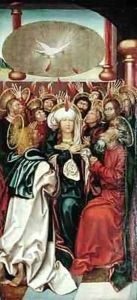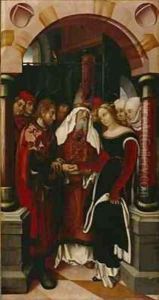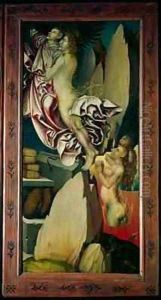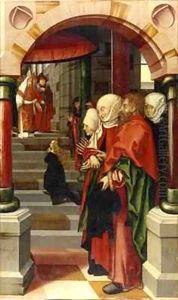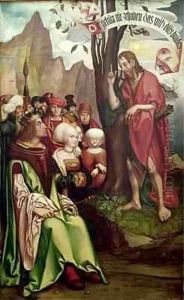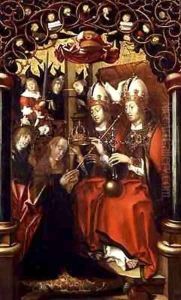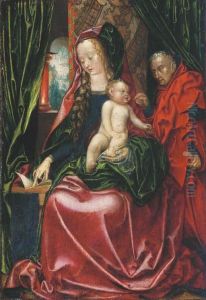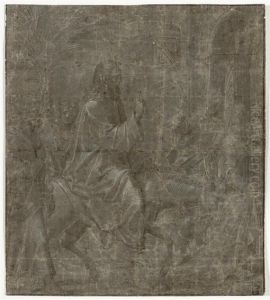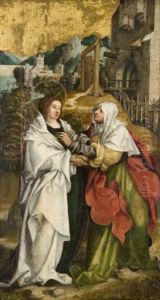Hans Fries Paintings
Hans Fries was a Swiss painter and draughtsman, recognized for his significant contribution to the early Northern Renaissance art movement. Born around 1465, his exact place of birth remains unclear, though it is generally believed he originated from Fribourg, a city deeply rooted in the artistic and cultural exchanges of the period. Fries' life and career were marked by the tumultuous changes of the late 15th and early 16th centuries, a time when Europe was undergoing profound shifts in its social, political, and religious landscapes.
Fries was primarily active in Fribourg and Bern, where he was documented to have worked on various commissions, both religious and secular. His art is characterized by its vivid detail, expressive figures, and innovative use of color, which set him apart from his contemporaries. He was particularly adept at altarpieces, frescoes, and small devotional panels, which often depicted biblical scenes or saints. One of his most notable works is the altarpiece for the Church of St. Nicholas in Fribourg, showcasing his skill in creating narrative and emotion through painting.
Despite his considerable talent, much of Hans Fries' life and work have been overshadowed by other Northern Renaissance figures. However, recent scholarship has begun to re-evaluate his contribution to the art of this period, highlighting his role in the development of Swiss painting and his influence on subsequent generations of artists. Fries' work reflects the transitional nature of the era, bridging late Gothic sensibilities with the emerging Renaissance ideals of humanism and naturalism.
Hans Fries' death in 1523 marked the end of a career that had seen the artist navigate the complexities of a changing Europe. His legacy, though underappreciated for centuries, has grown in recognition as historians and art lovers alike have come to appreciate the unique qualities of his work. Today, Fries is celebrated not just as a Swiss artist, but as an important figure in the broader tapestry of Northern Renaissance art.
